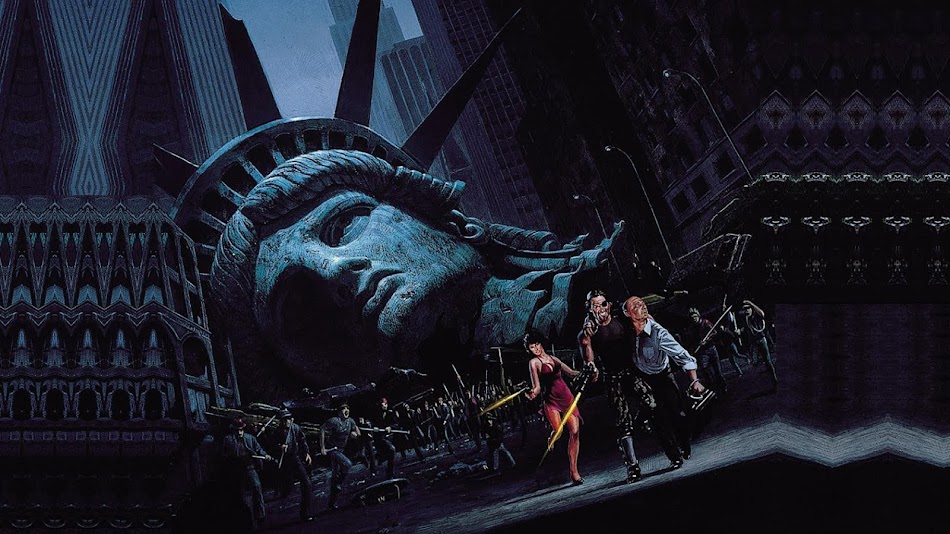SOUND CITY
(US - 2013)
Directed by Dave Grohl. Written by Mark Monroe. Cast: Dave Grohl, Vinny Appice, Robert Levon Been, Frank Black, Lindsey Buckingham, Mike Campbell, Kevin Cronin, Mick Fleetwood, John Fogerty, Neil Giraldo, Chris Goss, Taylor Hawkins, Joshua Homme, Jim Keltner, Barry Manilow, Paul McCartney, Rupert Neve, Stevie Nicks, Krist Novoselic, Keith Olsen, Stephen Pearcy, Tom Petty, Nick Raskulinecz, Trent Reznor, Rick Rubin, Pat Smear, Rick Springfield, Corey Taylor, Benmont Tench, Lars Ulrich, Butch Vig, Lee Ving, Brad Wilk. (Unrated, 104 mins)
Foo Fighters leader Dave Grohl's filmmaking debut functions equally as a BEHIND THE MUSIC documentary, all-star jam session, and a heartfelt love letter from a fan to all of the rock heroes of his childhood. Grohl's documentary is not just about the legendary Sound City Studios in Van Nuys--it's about rock history, the passion of artists, the creative process, and finding a balance between using technology in a way that makes it an instrument as opposed to a crutch. Despite being one of the biggest rock stars in the world, Grohl is still a fan first, and that love and respect and pure sense of fun comes through in every minute of SOUND CITY.
Grohl's first encounter with Sound City came during his days as Nirvana's drummer when they recorded Nevermind there in 1991. His initial reaction to the run-down, no-frills studio was "This is Sound City?" Turns out it hadn't changed much since 1975 when it first became the place to be after Fleetwood Mac put it on the map. REO Speedwagon's Kevin Cronin describes his first impression of Sound City as a "shithole," and veteran producer and one-time Sound City employee Nick Raskulinecz says "If you spilled a bottle of Jack Daniels, it would be like 'It's Sound City, who cares?'" But magic happened at this small, non-descript studio that often dealt with parking lot flooding spilling into the main entrance. Not only did all the hot acts in rock start working there, but it was also home to a unique, custom-made mixing console designed by Rupert Neve, which was reputed to capture a drum sound that no other studio could achieve. The strictly analog Sound City found itself becoming obsolete by the mid-1980s, with chief engineer Keith Olsen jumping ship to open a digital studio right next door. As synthesizers and drum machines and programming became more commonplace, Sound City was essentially tumbleweeds and chirping crickets until Nirvana worked there (it was cheap) and grunge gave rise to a return to a more pure and real sound. But with the onset of technological breakthroughs like ProTools and AutoTune software, Sound City once again found itself on the outs, finally closing down in 2011.
 |
| Grohl and Lindsey Buckingham checking out the Neve Console. Note the awesome Velvet Grohl in the background |
Throughout the film, there's an infectious feeling of unbridled enthusiasm, but also a deep sense of mourning for the loss of a bygone era. Reznor comments that ProTools and the like have enabled people who have no business being in the music industry to become superstars. Many mention the digital element and the software and the ability to achieve perfection only serve to take the human element out of the music (Tom Petty: "It's not supposed to be perfect"). And when Sound City closes, it's like a death in the family (Homme: "Technology and the internet are cool for some things, but now there's no music stores, there's no bookstores, and now there's no Sound City"). Some of the film's highlights: rare home-movie footage of Petty and the Heartbreakers recording Damn the Torpedoes and realizing how much the sparse, down-to-the-basic-essentials Sound City tested their abilities and pushed them as musicians; Skeeter showing Grohl the original early '70s work order for the Neve Console with a cost of $75,000 (Skeeter: "I bought a house in Toluca Lake that same year for $38,000!"); Raskulinecz describing working the reception desk one night and seeing Petty, John Fogerty, and Carl Perkins walk in; and Springfield expressing sincere remorse at how he treated Gottfried, who shepherded his career and helped make "Jessie's Girl" happen until Springfield says he was "coerced" into dumping him a few years later. Springfield struggles to keep his composure at the memory of it, saying how wrong he was and how grateful he is that they were able to make amends before Gottfried's death.
SOUND CITY runs the gamut of emotions throughout, and it's hard to imagine any rock music fan not finding this a rich, rewarding, and very moving film that celebrates an important time and place in music history. Already one of 2013's best films, SOUND CITY also takes its place among the best rock documentaries ever made.






No comments:
Post a Comment